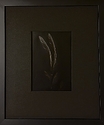This is the tough nuance... Plus-X before 1960 and after 1960 would give the same 0.10 density when given an exposure of 0.0063 meter candle seconds and developed to ASA parameters. In other words, the same amount of light would give you the same amount of density.
Zone System starts with an experimental exposure which gave 0.10 density and asks you to go back and turn the film speed dial on your meter until Zone I lines up with the meter needle.
No matter what anybody says the film speed is, the result of Zone System adjustment of a light meter will be 80 as a result of an experiment with Plus-X.
Bill, yes... 0.1D reference level is the one used by ASA pre-1960 and today, so not a surprise AA/Archer used it to define the first exposure allowing some detail, adhering to industrial standards of the ZS era.
There is no doubt that ZS table instructs to overexpose the 18% middle gray (Z-V) by one stop, allowing 4 stops shadow latitude... and adhering the 1940 (Pre 1960) film rating standards.
My view is that the Pro_vs_Anti ZS debates are usually out of focus, because the only remarkable point is that ZS aims a nominal +1 which is not a bad advice anyway, if we have light power enough.
Still ZS newcomers should be warned that using box speed won't deliver detail in Z-I like the ZS table says, because at -4 we have black nominally, and this is because ZS table was made when industrial norms placed 0.1D at 4.3 stops underexposure, while today Box speed nominally places 0.1D at 3.3 stops underexposure.
IMO (for challenging scenes) the ZS 1 stop overexposure has a clear advantage, supose that we place the "scene middle 18% gray" in the "print 18% middle gray", probably Z-I will go mostly black in the print, but we can pull detail there by some dodging, that detail exists in a +1 ISO overexposed negative, but it is absent in a post 1960 exposure. Also ZS delivers have a nice 1 stop safety factor for -3 detail...
Probably one ends exposing the same if following ZS than if not, because at the end we use feedback to end in the right compensation in our decision making.
No matter what anybody says the film speed is, the result of Zone System adjustment of a light meter will be 80 as a result of an experiment with Plus-X.
Yeah... And suposing it is developed with Ilfotec DD-X or Xtol, with Rodinal probably we would end in an even lower EI...













